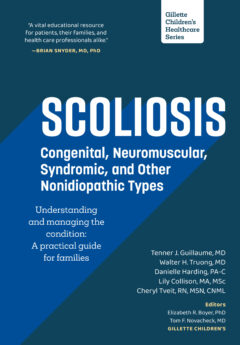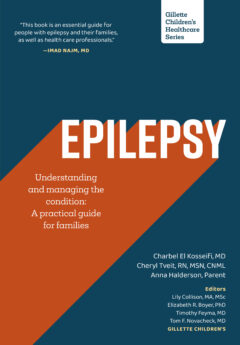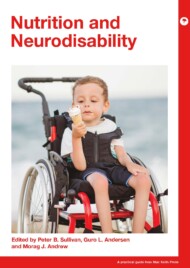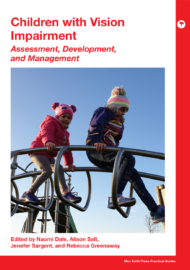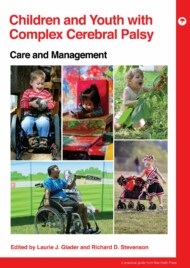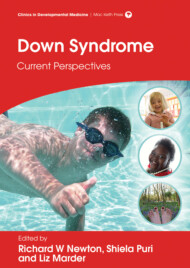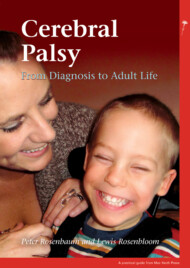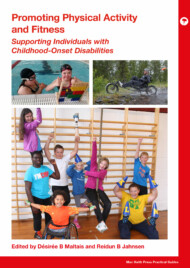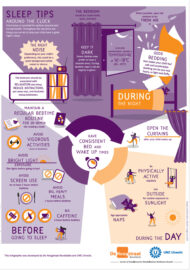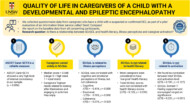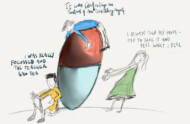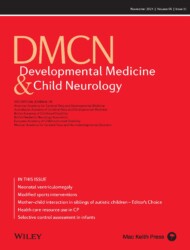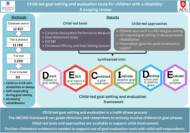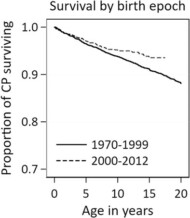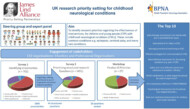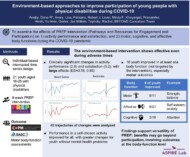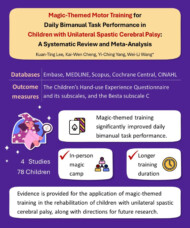Welcome
Start exploring here! We hope this will be a useful resource to help you find the information you need about cerebral palsy and other childhood-onset disabilities. We want to help you to find answers to your questions – so please let us know what else you would like us to cover. Here we are presenting videos, summaries, research information and other resources.
Read on for more
Ways we can help
1
Family-friendly Books
Discover our collection of family-friendly books featuring accessible, research-based insights. These titles include the perspectives of families and individuals with lived experience, offering valuable guidance while supporting parents on their journey.
2
Free Chapters
We have selected a range of chapters from our books, offering helpful insights and practical tips. Our chapters summaries highlight key points. View the full chapter to explore each topic in more depth.
3
The Knowledge Bank
Explore the answers to your questions here. Find out more about conditions, treatments, interventions, and all aspects of care. Follow signposts to find more in-depth, evidence-based information from Mac Keith Press content, as well as other great sources of knowledge.
4
Plain Language Summaries
Plain language summaries are an effective way of communicating scientific research to a wider audience. By presenting the key findings and significance of a study in easy-to-understand language, the content becomes more accessible to more people. Here we present summaries of papers published in Developmental Medicine & Child Neurology (DMCN).
5
Helpful Videos
Here you will find a collection of short videos from authors and editors summarising their work. They cover Developmental Medicine & Child Neurology (DMCN) articles, Mac Keith Press books and e-learning. The aim of the videos is to help viewers get a clear understanding of why the research is important, how it was carried out, and real-world implications.
Gillette Children’s Healthcare Series
The goal of the Gillette Children’s Healthcare Series is to empower families through a greater understanding of their condition and therefore help optimize outcomes for children, adolescents and adults living with these childhood-acquired and largely lifelong conditions.
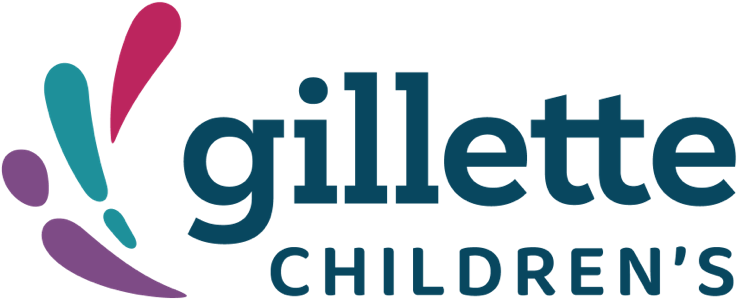
Free chapter downloads
The Knowledge Bank
Explore the answers to your questions here. Find out more about conditions, treatments, interventions, and all aspects of care. Follow signposts to find more in-depth, evidence-based information from Mac Keith Press content, as well as other great sources of knowledge.
How will scoliosis affect my child’s day-to-day life?
Research shows that individuals treated for scoliosis have physical activity levels comparable to the general population, and most report good mental and social health.
How will scoliosis affect my child’s day-to-day life?
This answer is adapted from the Gillette Children’s Healthcare Series book on Idiopathic Scoliosis.
Research shows that individuals treated for scoliosis have physical activity levels comparable to the general population, and most report good mental and social health.
Potential challenges include:
- Physical discomfort and limitations: Bracing, a common treatment, may cause heat, pressure, and physical discomfort while the brace is being worn. The brace is removed for sports and physical activity. Full-time brace wear can negatively affect quality of life, including emotional stress and social isolation, especially in adolescents.
- Psychosocial impact: Adolescents may feel self-conscious about their appearance, experience embarrassment, or avoid social interactions due to concerns about being different from peers.
- Activity restrictions: Post-surgery recovery involves temporary limitations, such as avoiding twisting, bending, lifting over 10 lb (4.5 kg), or participating in contact sports for several weeks to months. However, these are temporary and part of the healing process. Once healing has happened, most activities can be resumed without restriction or limitation.
While scoliosis may require temporary adjustments—such as wearing a brace or following temporary post-surgical restrictions—the long-term outlook is very positive. With proper treatment, most children can expect to live full, active lives with minimal impact on their daily routines and overall well-being.
Did anything cause the scoliosis or make it worse – heavy backpack, the mattress they sleep on, their activities?
No —there is no evidence that heavy backpacks, sleeping on a specific mattress, physical activities, or poor posture cause or worsen idiopathic scoliosis.
Did anything cause the scoliosis or make it worse – heavy backpack, the mattress they sleep on, their activities?
This answer is adapted from the Gillette Children’s Healthcare Series book on Idiopathic Scoliosis.
No —there is no evidence that heavy backpacks, sleeping on a specific mattress, physical activities, or poor posture cause or worsen idiopathic scoliosis.
Parents and children often wonder if certain actions caused the condition, but the answer is a clear “no.” Idiopathic scoliosis is a condition of unknown cause (“idiopathic” literally means “of unknown cause”), and while some family predispositions (having parents or siblings with idiopathic scoliosis) may increase risk, the listed factors are not associated with its development or progression.
How is cerebral palsy diagnosed, and what tests or assessments should I expect for my child?
There is no single test to confirm CP, unlike other conditions such as type 1 diabetes, which is confirmed through a simple blood test for glucose, or Down syndrome, which is confirmed through a genetic test.
How is cerebral palsy diagnosed, and what tests or assessments should I expect for my child?
This answer is adapted from the Gillette Children’s Healthcare Series books on Cerebral Palsy (CP).
There is no single test to confirm CP, unlike other conditions such as type 1 diabetes, which is confirmed through a simple blood test for glucose, or Down syndrome, which is confirmed through a genetic test. CP is not a single condition; rather, it is a group of conditions.
Until recently, a diagnosis of CP was generally made between 12 and 24 months based on a combination of clinical signs (e.g., lack of use of a limb), neurological symptoms (e.g., presence of spasticity), and physical limitations (e.g., delayed independent sitting or walking). However, using certain standardized tests in combination with clinical examination and medical history a diagnosis of CP can often accurately be made before six months corrected age. Early diagnosis is very important because it allows for early intervention, which helps to achieve better functional outcomes for the child.
There are two distinct pathways in the International Clinical Practice Guideline for early diagnosis of CP:
Before five months corrected age, for infants with newborn detectable risk factors (e.g., preterm):
- MRI (magnetic resonance imaging)
- GMs (Prechtl Qualitative Assessment of General Movements)
- HINE (Hammersmith Infant Neurological Examination)
After five months corrected age for infants with infant detectable risk factors (e.g., delayed motor milestones)
- MRI
- HINE
- DAYC (Developmental Assessment of Young Children)
The presence of a brain injury is confirmed by MRI in many but not all children with CP. Imaging may also help determine when the brain injury occurred. However, up to 17 percent of children diagnosed with CP have normal MRI brain scans. For these children, best practice is to investigate further to rule out genetic and metabolic conditions.
Where a CP diagnosis is suspected but cannot be made with certainty, using the interim diagnosis of “high risk for CP” is recommended until a diagnosis is confirmed. This allows the child to receive the benefits of CP-specific early intervention.
For further information, pleas check the Mac Keith Press title Prechtl’s Method on the Qualitative Assessment of General Movements in Preterm, Term and Young Infants and the Hammersmith Neonatal and Infant Neurological Examinations.
- Purchase 'Spastic Hemiplegia–Unilateral Cerebral Palsy'
- Preview full content of 'Spastic Hemiplegia–Unilateral Cerebral Palsy' via Flipbook.
- Purchase 'Spastic Diplegia–Bilateral Cerebral Palsy 2nd Edition'
- Preview full content of 'Spastic Diplegia–Bilateral Cerebral Palsy 2nd Edition' via Flipbook.
- Purchase 'Spastic Quadriplegia–Bilateral Cerebral Palsy'
- Preview full content of 'Spastic Quadriplegia–Bilateral Cerebral Palsy' via Flipbook.
How early can cerebral palsy be diagnosed?
Cerebral palsy (CP) can often be diagnosed before six months corrected age. Research indicates that a diagnosis can be made with reasonable accuracy using Magnetic resonance imaging (MRI) in combination with standardized assessments like the Prechtl Qualitative Assessment of General Movements (GMs) and the Hammersmith Infant Neurological Examination (HINE).
How early can cerebral palsy be diagnosed?
This answer is adapted from the Gillette Children’s Healthcare Series books on Cerebral Palsy (CP).
Cerebral palsy (CP) can often be diagnosed before six months corrected age. Research indicates that a diagnosis can be made with reasonable accuracy using Magnetic resonance imaging (MRI) in combination with standardized assessments like the Prechtl Qualitative Assessment of General Movements (GMs) and the Hammersmith Infant Neurological Examination (HINE). These tools are used for infants with known risk factors, such as preterm birth or birth asphyxia. Early diagnosis is very important because it allows for early intervention, which helps to achieve better functional outcomes for the child.
For further information, pleas check the Mac Keith Press title Prechtl’s Method on the Qualitative Assessment of General Movements in Preterm, Term and Young Infants and the Hammersmith Neonatal and Infant Neurological Examinations.
- Purchase 'Spastic Hemiplegia–Unilateral Cerebral Palsy'
- Preview full content of 'Spastic Hemiplegia–Unilateral Cerebral Palsy' via Flipbook.
- Purchase 'Spastic Diplegia–Bilateral Cerebral Palsy 2nd Edition'
- Preview full content of 'Spastic Diplegia–Bilateral Cerebral Palsy 2nd Edition' via Flipbook.
- Purchase 'Spastic Quadriplegia–Bilateral Cerebral Palsy'
- Preview full content of 'Spastic Quadriplegia–Bilateral Cerebral Palsy' via Flipbook.
Submit a question
Let us know what other questions you have. Are there specific topics you would you like us to cover?
Contact us now using the form.
Plain Language Summaries
Plain language summaries are an effective way of communicating scientific research to a wider audience. By presenting the key findings and significance of a study in easy-to-understand language, the content becomes more accessible to individuals with disabilities, parents, caregivers, and others. Here we present summaries of papers published in Developmental Medicine & Child Neurology (DMCN).
Helpful videos
Here you will find a collection of short videos from authors and editors summarising their work. They cover Developmental Medicine & Child Neurology (DMCN) articles, Mac Keith Press books and e-learning. The aim of the videos is to help viewers get a clear understanding of why the research is important, how it was carried out, and real-world implications.
UK research priority setting for childhood neurological conditions| Jill Cadwgan & Rhys Inward |DMCN
Contact us
Please feel free to contact us if you have any feedback or suggestions:
